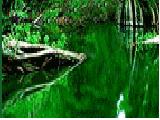This cultural tour includes a visit to South America’s
best examples of republican colonial architecture: Sucre and
Potosí, declared by UNESCO World Cultural and Natural
Heritage Sites, where one can find colonial and religious
monuments and a number of relics of the past. The city is
set amid charming surroundings dotted with artificial lakes
and towns where handicraft markets are held and one can
enjoy the dances and Sunday fairs handed down from past
centuries.
Tourist Attractions
Potosí
Declared World Cultural and Natural Heritage Site, Potosí
was one of the most important cities during the colonial
era, a wealthy mining center settled by thousands. It is the
site of a number of constructions that today are considered
to be exquisite examples of colonial architecture. These
include the church-museums of San Francisco and Santa
Teresa, the churches of Santo Domingo, San Lorenzo and
Jerusalén and the Antonio López de Quiroga mansion once
owned by Mestre de Campo, the wealthiest miner in the area.
Cerro Rico
The fame of what was for several centuries the most
important silver deposit in the Americas dates back to the
time of the Inca Huayna Capac. Desirous of working the Sumac
Orcko (Cerro Rico or Mountain of Wealth), he was stopped by
a voice thundering from the mountain that forbade the
Indians from mining the silver. In 1545 it was rediscovered
by the Indian Diego Huallpa and when the Spaniards learned
about its mineral content, they started mining activities.
Today one can visit the mountain only 700m south of Potosí
and walk with a trained guide through some of the shafts of
the colonial mines.
Casa Real de la Moneda
(The Royal Mint)
The building of this architectural example of the city’s
splendor was started in the mid eighteenth century and
completed in 1773. The draftsman responsible for the
project, Salvador Villa, also built the mints in Lima and
Mexico City. Today it is a Mint Museum and one can see from
the high stone and brick walls, the spacious rooms with
their colonial décor and precious objects, and the central
patio with its ornamental fountain surrounded by high arches
why it is considered a national monument.
Betanzos
This village standing 40 km from Potosí on the road to
Sucre is known for its traditional local fairs where
products are bartered and one can find fabrics and ceramics,
as well. Only 3km away, there are paleontology sites
containing Quaternary fossil deposits of antediluvian
animals that roamed the area and the cave paintings of Lajas
Mayu and Inca Cueva.
Sucre
Bolivia’s capital, this city was witness to the first
proclamation of freedom of the Americas on May 25, 1809. It
was also the site of the creation of the Republic of Bolivia
with the signing on August 6, 1825 of the Act of
Independence, ushering in the birth of a new nation. Today
its buildings, its churches, monuments and palaces house
museums and private collections and are places of civic
reverence. Nearby, one can visit the largest wall of
dinosaur prints, Kal’ a Orcko. Only 15 minutes away from
Sucre lies the colonial town of Yotala, with its resort.
|

![]() World
News World
Top Stories Web
Search Web
Images
Search Web
Groups Search Web
Catalogs Web
Directory
News Search
World
News World
Top Stories Web
Search Web
Images
Search Web
Groups Search Web
Catalogs Web
Directory
News Search






